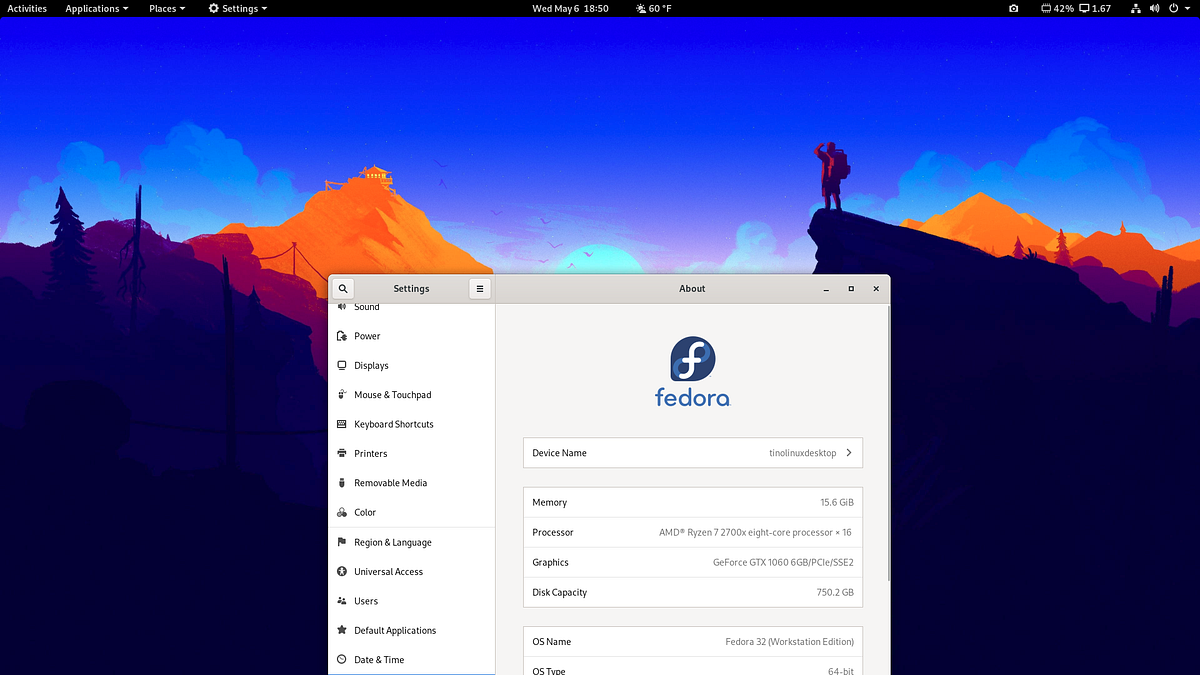Started back down Linux Gaming, and Exclusively Using Linux
It’s been two years since I’ve gone full Linux for gaming. I tried it once but ended up going back to Windows because of the games I was…

It’s been two years since I’ve gone full Linux for gaming. I tried it once but ended up going back to Windows because of the games I was playing. I also ran into issues with the Nvidia drivers, it became a pain to do updates, and things would break. The number of games were also lacking. Since then, I’ve stuck with Windows for gaming and Linux for everything else. The Linux world has changed a lot for gaming since then.
When I went back down this path, I am trying to use the GUI as much as possible, and report bugs as much as I can using the built-in Report software. That’s not to say I don’t know the command line… I just want to see what it’s like for people that aren’t that comfortable with the command line.
Linux Setup
I decided to go with Fedora 32 because of the support it has, and the team does a great job at keeping everything up to date. The work done by the Fedora team has been very impressive. I like having SELinux for added security on the system. They also like to experiment and give me a choice, for example, the inclusion of Pipewire and allowing me to install with BTRFS. My system is an AMD 3700 (16-core), Nvidia 1060 6GB, 500GB NVMe SSD, and ASUS B450 PRIME. The system runs beautifully, and with no hiccups, and the new GNOME has greatly improved the experience.
Linux game Support
I was glad to see the amount of games that support Linux out of the box has continued to grow. With the news I’ve seen about the amount of Linux Steam users not growing at the same pace as Windows, it’s still getting support for some big/small games. Now, I do occasionally miss playing games like Call of Duty, but I still have so many other games I can play. Thanks to the work from Valve and WINE, there’s more games coming to Linux, even if most are ran inside WINE.

Steam and Proton
The best gaming experience I’ve had has been with Steam, of course. Even on Windows I much preferred Steam. They handle both Linux and Windows games seamlessly. All I have to do is click install, and start the game. As opposed to something like Lutris, where I sometimes have to run through installers, or ensure I have some packages/libraries installed on my system (I.e. Diablo and Borderlands 3 from Epic). The only problem I have with Steam is I wish the handled file browsing better when adding drives. Users shouldn’t need to know how to find mounted devices on their file system, this needs to be easier for them. As an example, GNOME disks makes it very easy to manage mounted disks.

Lutris and DXVK
Not all games exists on Steam, yet they still work just fine on Linux. For those, you can use Lutris. This is a game launcher, much like Steam, that will assist you with finding, installing, starting, and managing your non-Steam game library. The software, for the most part, will handle most installs for you with scripts that have been pre-written. However, keep in mind, you should read the website for the game you’re trying to install. Sometimes a game may require you to install software outside of Lutris for the game to run correctly. This is because the game relies on some library your OS might not have installed by default, and sometimes it’ll be a command line install. Luckily, the web page will tell you which library to install. Other than that, this works ALMOST as well as Steam.
Issues Found
All Operating Systems have issues, and Linux is not an exception to that. I have run into some issues along this ride. For one, GNOME Software lacking support for package formats like Snap. I also ran into a problem when enabling the 3rd-party repositories, I had to run a command from the RPM Fusion website to force the Nvidia drivers and Steam store to show in GNOME Software, else you have to install with the command line.
Audio handling has also greatly improved, I would sometimes have to rip and replace PulseAudio to fix audio no longer working years ago. However, there is a problem I ran into, GNOME not remembering my default audio device. I had to edit a text file to fix this, no matter how many times I tell GNOME to set my audio out as HDMI out. I’ll post an article on how to do this.
